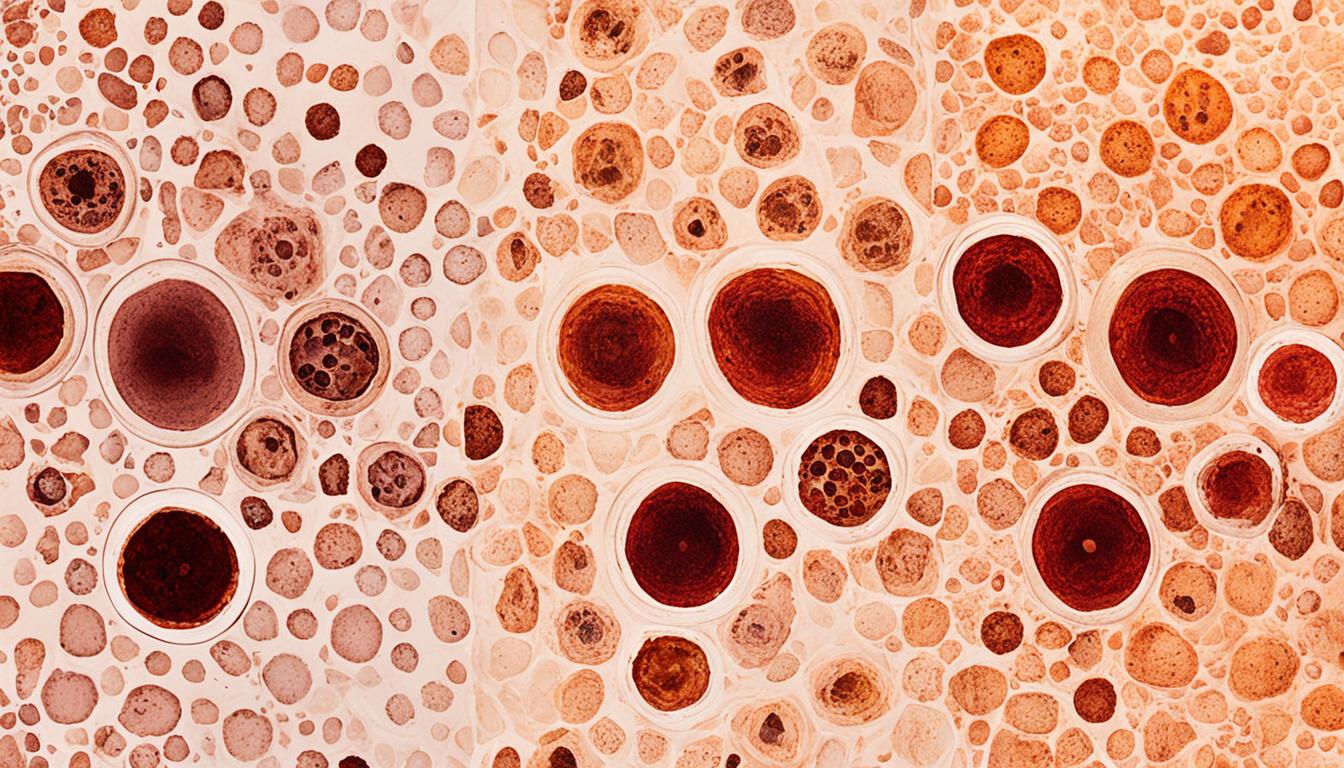Liver spots, or age spots, are dark spots seen on the skin. They often look brown and show up on areas exposed to the sun. These areas include the face, hands, shoulders, and arms.
These spots occur because the skin produces too much melanin. This is caused by spending too much time in the sun. Aging, genes, hormonal changes, and some medications can also lead to liver spots.
Most of the time, liver spots are harmless. They don’t need treatment, but some people opt for cosmetic procedures. These can help make liver spots less visible. Options include laser therapy or chemical peels.
Stem cell therapy is a new way to potentially treat liver spots. This method uses stem cells from your body or a donor. It’s still being studied to make sure it’s safe and works well.
This treatment may offer hope for those looking to get rid of liver spots. It’s an exciting area of research. But, more studies are needed to fully understand its benefits.
Key Takeaways:
- Liver spots, also known as age spots or sun spots, are dark spots or patches that develop on the skin.
- Excessive melanin production, triggered by prolonged exposure to the sun, is the primary cause of liver spots.
- Aging, genetic predisposition, hormonal changes, and certain medications can also contribute to the development of liver spots.
- Cosmetic procedures like laser therapy or chemical peels may be used to reduce the appearance of liver spots.
- Stem cell therapy, derived from the patient’s own body or a donor source, is an experimental treatment option for liver spots.
Causes and Symptoms of Liver Spots
Liver spots are dark patches on the skin. They’re also known as age or sun spots. The sun’s UV rays cause our skin to make more melanin, leading to these spots over time.
Other than the sun, liver spots can also come from getting older, having certain genes, or taking some medicines. The older we get, the less our skin can control melanin. Some people are naturally more likely to get these spots. Changes in hormones due to pregnancy or menopause can make liver spots appear. Medicines like hormone pills or some cancer drugs also play a role.
Liver spots are mostly harmless, yet they can sometimes make the skin itchy or tender. They might change how the skin feels. It’s crucial to remember that liver spots are not the same as skin cancer. If your skin looks different or you’re worried, seeing a dermatologist is smart.
Key Points:
- Liver spots are dark spots or patches that develop on the skin.
- The primary cause of liver spots is prolonged exposure to the sun’s UV rays.
- Other contributing factors include aging, genetic predisposition, hormonal changes, and certain medications.
- Liver spots are typically harmless and do not cause symptoms.
- If you have concerns about your skin, consult with a dermatologist for appropriate diagnosis and treatment.
Diagnosis and Treatment Options for Liver Spots
Liver spots, or age spots, are diagnosed by a doctor through a visual exam. Sometimes, a Wood’s lamp or skin biopsy is used to confirm. They’re typically harmless, so treatment isn’t usually necessary. But, some choose cosmetic procedures to lessen their look.
Laser therapy and chemical peels can help fade liver spots. Laser therapy focuses on pigmented skin cells, boosting the healing process. This makes new, healthier skin cells. Chemical peels use a solution to remove the top skin layer. They reduce dark pigmentation, making spots less visible.
Stem cell therapy is a newer option showing some promise. It aims to repair skin cells and improve skin color. Stem cells can come from the patient or a donor. Yet, remember, this method is still being studied. More research is required to prove its safety and effectiveness.
Choosing a treatment for liver spots should involve a talk with a doctor. They will look at your skin type, medical history, and what you hope to achieve. This way, they can suggest the best approach for you.

